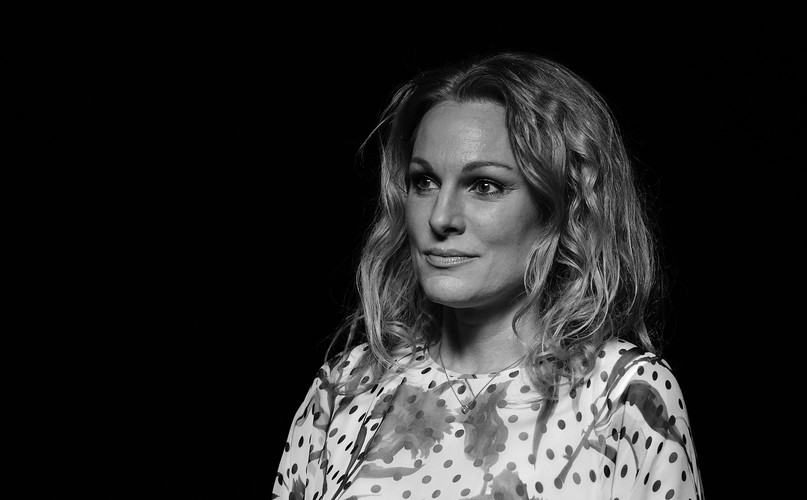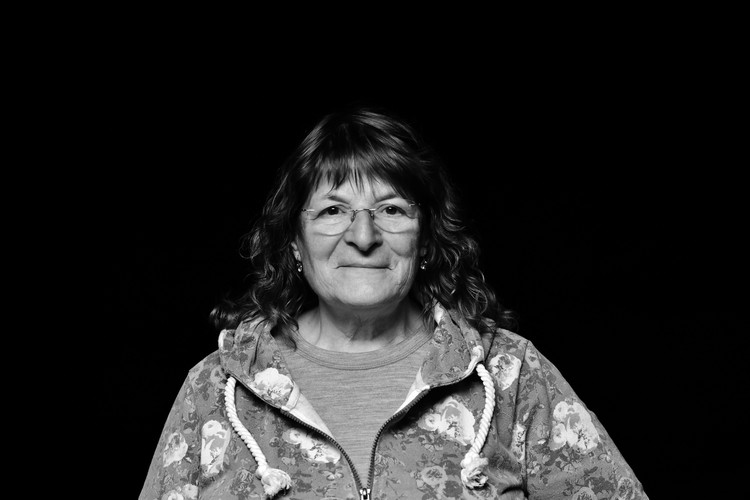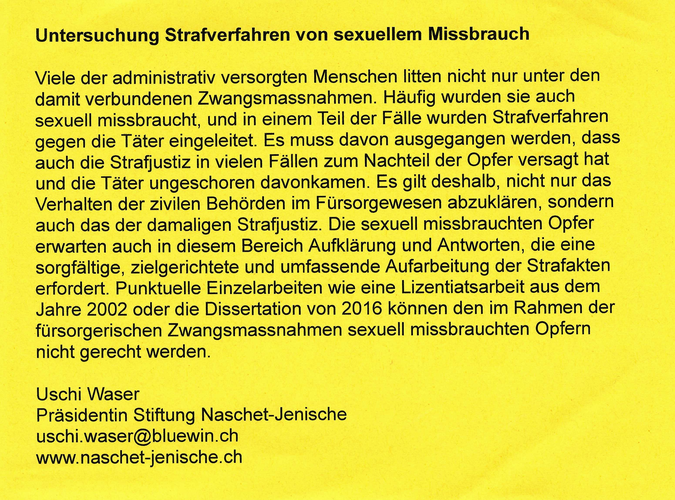Resilience
Many of the affected persons have managed to survive their traumatic childhood experiences in the long term. They have found strategies to deal with their experiences. This ability is called resilience.
How Can One Survive This?
There are many sources of strength – they range from the relationship with people and animals, to faith, music and art. They help to strengthen the personal resources.
How people survive the adversities of life and find ways to live on even after traumatising experiences is a topic of resilience research since the 1950s. There are different models for this. They all share the conviction that the necessary resources for resilience can be strengthened. ...
Reprocessing Traumas
Therapeutic work can help to cope better with an experience and its consequences.

MarieLies Birchler: “The Buried Child”, late 1970s: The attempt to protect oneself. The lid still holds tight. Above her it is bubbling and life-threatening. At the same time the lid prevents her from breaking free into life; soon she will blast herself free to live.
MarieLies Birchler has sought therapeutic help and thereby also found the strength to talk to the nuns of Ingenbohl who had abused her for many years.
“For All Those Whose Dignity Has Been Violated”
For many people, music has a great importance. For traumatised people music can be a source of strength and inspiration at the same time.
Yvonne Barth sang the self-composed song “Placement in Care From the Perspective of Those Children” at the commemorative event for victims of compulsory social measures and placements in the canton of Basel-Stadt on October 25, 2021. Her song puts the experience into words and at the same time renders the energy of her own resilience audible.
We Talk in this Film
How Can One Survive This?
There are many sources of strength – they range from the relationship with people and animals, to faith, music and art. They help to strengthen the personal resources.
How people survive the adversities of life and find ways to live on even after traumatising experiences is a topic of resilience research since the 1950s. There are different models for this. They all share the conviction that the necessary resources for resilience can be strengthened. ...
Resilience Research: Looking for Ways to Deal With the Adversities of Life
In today’s language, the term resilience is ubiquitous. Originally it characterized the physical ability of an object to spring back into its original shape after deformation. Psychology has adopted the term. Today resilience is a subject of various sciences, such as pedagogy, neuroscience or behavioural biology. Resilience describes the “good development”, despite high risk factors, and resilience research asks what the reasons for this are.
Besides the individual resources and medical risk factors, social structures and group-specific factors such as poverty, family or migration can affect the resilience of a person. Especially in the 1970s, several long-time studies were conducted on this matter. Emmy Werner and Ruth Smith pioneered with their so-called Kauai-study which monitored approx. 700 persons from birth in 1955 until 1995. A central finding of the study was that a trustworthy and dependable attachment figure in early childhood increases the chance for everybody to succeed in life.
Strengthening Resources Despite Individual Risk Factors
In psychology, resilience is not understood as a characteristic but as a process. It changes during a biography and depends on the situation. Exterior factors and individual abilities of a person, so-called resources, can have a positive influence on coping with difficult or traumatising experiences. The necessary preconditions and their interplay are complex.
Resilience research assumes that resources can be learned and strengthened. They include the ability of self-perception and perception of others which can help to classify and reflect on experienced situations and thereby gain distance to the experience. The ability of self-regulation, such as being aware of one’s own needs and feelings, supports stress management and strengthens physical health resources. Cultivating individual interests, building sustaining social relationships or seeing a meaning in life enhance self-esteem and the experience of self-efficacy.
Those affected by compulsory social measures and placements, have often experienced neglect, violence and abuse. For some of them, fantasy was an important place to escape to and helped them to survive the trauma. If affection from grown-ups lacked, in some cases animals could also fill the gap, at least partially, by providing emotional and physical closeness.
Many of those affected by compulsory social measures and placements came as adolescents or adults to a crossroads where they consciously decided to continue to live, despite the manyfold and lasting aftereffects from the traumas they had suffered. For others the experiences weighed so heavily that they committed suicide. The resources that strengthen the resilience of the survivors and maintain it vary. New attachment figures as an adolescent and adult, family and friendships or, as mentioned, close relationships to animals can be important sources of strength. Others find it in faith and spirituality, still others in personal passions, hobbies and artistic expression.
Long-term health effects, financial and social consequences have an impact on one’s own resilience. And even if resilience is present: as it is a process and not a state and as this process is not linear, resilience can always be shaken by unforeseen events, such as the lockdown during the Corona pandemic.













